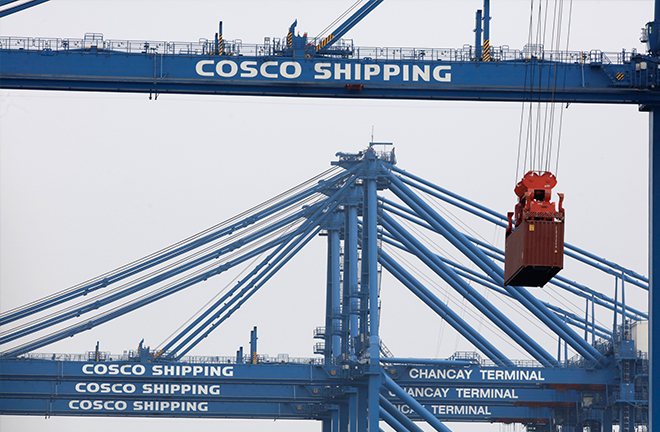China, LAC lay new groundwork for cooperation

The Chancay Port in Peru, an important infrastructure project in Latin America under the China-proposed Belt and Road Initiative Photo: IC PHOTO
On May 13, the Fourth Ministerial Meeting of the China-CELAC (Community of Latin American and Caribbean States) Forum was held in Beijing. Chinese President Xi Jinping attended the opening ceremony and delivered a keynote address titled “Writing a New Chapter in Building a China-LAC Community with a Shared Future.” The forum sent a strong signal of the shared commitment between China and Latin America and the Caribbean (LAC) to development and revitalization, drawing significant attention from scholars both in China and abroad.
Wide acclaim
In an interview with CSST, Zhou Zhiwei, director of the Department of International Relations at the Institute of Latin American Studies at the Chinese Academy of Social Sciences, elaborated on the significance of the meeting in three aspects.
First, he noted, the China-CELAC Forum has grown against the backdrop of the rise of the “Global South,” while also injecting vitality into the rise and cooperation of the bloc. Second, it offers new impetus for China-LAC cooperation, enhancing its long-term sustainability. Since the start of the 21st century, cooperation between China and LAC has entered a period of rapid growth, with significant advances in both scope and depth. The relationship is increasingly defined by equality, mutual benefit, innovation, openness, and people-centeredness, and the convening of the fourth ministerial meeting reinforces the sustainability and predictability of China-LAC ties. Third, China-LAC cooperation represents a proactive response to global uncertainties, Zhou continued. In today’s world, overlapping risks and mounting challenges—including the disruptive effects of unilateralism and protectionism on the international political and economic order—have created an urgent need for stable partnerships. In this context, China-LAC cooperation not only helps reduce development risks for both sides, but also contributes to broader global stability and the defense of multilateralism.
José Medeiros da Silva, a professor of Portuguese and director of the Center for Brazilian Studies at Zhejiang International Studies University, emphasized that China is home to more than 1.4 billion people, while the LAC region comprises a population of over 650 million. “In this sense, a fruitful and humanly beneficial dialogue between the Global South of the East and the Global South of the West can have a positive impact on the transformation of the entire world. And the China-CELAC Forum is an essential instrument for this.” He went on to underscore that dialogue and cooperation constitute the fundamental DNA of the forum, noting that the success of the fourth ministerial meeting has demonstrated its alignment with the deeper challenges of the current times.
A decade of fruitful results
Since the inaugural ministerial meeting of the China-CELAC Forum was successfully held in Beijing in 2015, the mechanism has remained vibrant and effective for a full decade. According to Zhou, the forum’s dynamism stems from several key factors: the principles guiding cooperation, the degree to which the interests of both sides align, and the tangible outcomes of cooperation.
Grounded in the principles of openness, inclusiveness, mutual respect, and equality, the China-CELAC Forum honors CELAC’s developmental realities and internal coordination mechanisms. China, notably, imposes no political conditions on the partnership, which adds a high degree of openness and flexibility to the forum. Each ministerial meeting produces a cooperation plan that is directly responsive to the complementary strengths of China and LAC, as well as the development goals of LAC countries, thus ensuring continuity and sustainability. In terms of outcomes, both bilateral trade and Chinese investment in LAC have already surpassed the targets set 10 years ago. As cooperation continues to expand across sectors, its efficiency has become a key driver of the forum’s long-term viability.
Discussing the Beijing Declaration adopted at the meeting, da Silva stated that it highlights the fruitful results of China-CELAC dialogue over the past decade, stresses the significance of multilateralism and South-South cooperation, and reaffirms the shared commitment to global peace and collective development.
Deepening cooperation
President Xi’s keynote speech at the opening ceremony has provided strategic guidance for the next phase of China-LAC cooperation. Da Silva noted that the speech offered valuable insights, both theoretical and practical, and outlined the launch of five major programs.
The first, the Solidarity Program, captures the very essence of the forum’s mission. The Development Program calls for a global environment that promotes openness and cooperation. The Civilization Program charts a path for building enduring friendship through mutual learning. The Peace Program underscores the foundation of shared prosperity and human wellbeing. Finally, the People-to-People Connectivity Program aims to strengthen exchanges across multiple sectors.
In his keynote speech, Xi also pledged to “provide a RMB66 billion yuan credit line to support LAC countries’ development,” and “implement a visa exemption for five LAC countries as the first step and expand this policy coverage at proper times” to facilitate friendly exchanges.
Zhou believes that both financial support and growing tourism exchanges will underpin China-LAC partnerships in more ways, forming a multi-engine-driven cooperation model. Financial cooperation, in particular, represents a notable innovation: China has entered into currency swap agreements with several LAC nations, while many countries in the region have begun RMB clearing operations and are expanding the scope of trade settled in local currencies. These efforts, he noted, are significant steps toward reforming the international monetary system. At the same time, the potential for tourism cooperation is vast. Visa-free travel will not only encourage people-to-people exchanges but also foster mutual understanding, laying the groundwork for a new wave of opportunities in China-LAC collaboration.
Edited by CHEN MIRONG
